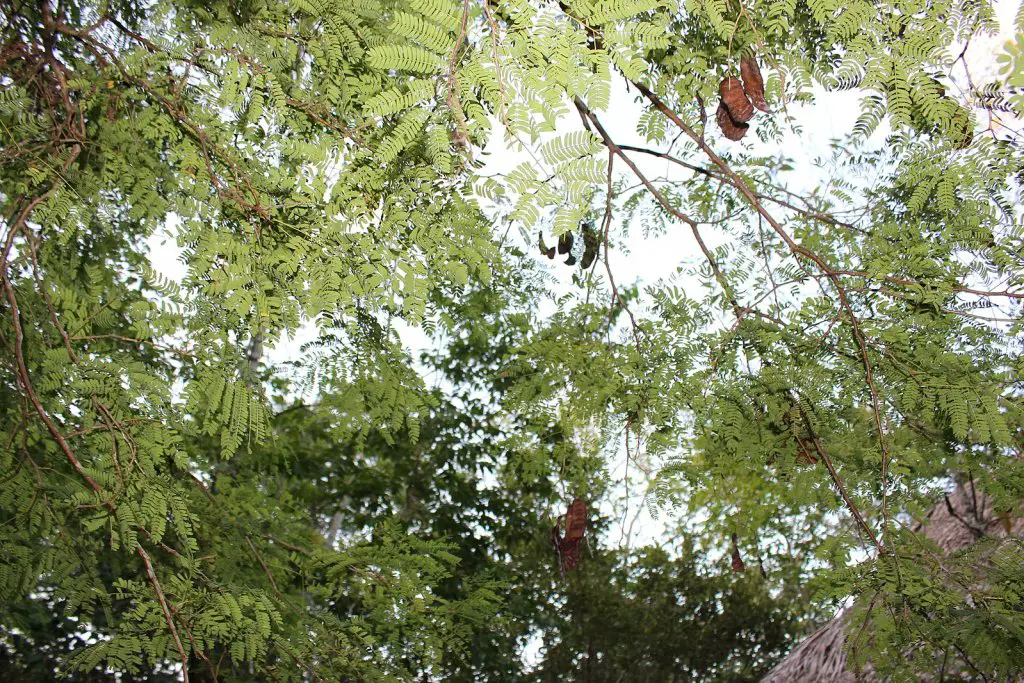Texas ebony trees are slow-growing, drought-tolerant, bushy shrubs that can be trained into large patio evergreen trees with zigzagging branches and large seed pods. Known for its hardiness and edible seeds, this beautiful tree is one of the only "exotic" hardwoods native to the United States.
Texas ebony: plant profile
| Scientific name | Ebenopsis ebano |
| Family | Fabaceae (pea family) |
| Plant type | Flowering plant |
| Kingdom | Plantae |
Common names:
- Ebano
- Ebony apes-earring
- Ebony blackbead
- False acacia
What is a Texas ebony tree?
This tree is a perennial capable of reaching 25-30 feet.
Texas ebonies are outstanding shade trees that are readily adapted to any landscape. As they grow, these burly trees produce strong canopies, allowing them to withstand harsh winds.
What Are You Foraging For Right Now?
We're thrilled to hear your ideas. What would you like to submit today? Feel free to share your thoughts and experiences with us.
Its twisting branches give Texas ebony trees a unique personality and make them easily noticeable when planted among other trees.
The South Texas brushland is dominated by Texas ebony, which has many distinguishing features, including its woody pods, dense dark green foliage, zigzag branching, and fragrant flowers.
Remarkably, this tree doesn’t drop its leaves. Its evergreen, shade-producing leaves make this an attractive landscape tree.
During the late spring, the cream-colored flowers are followed by thick, curved pods that are the source of the nickname “monkey’s ears”.
The branchlets, which tend to form a zigzag pattern, are armed with pairs of wicked spines at the nodes.
Initially gray, the bark eventually turns dark brown before becoming black and rough.

Where does Ebenopsis ebano grow?
As the name suggests, the Texas ebony is native to Texas and only grows in the country’s southwest region.
It can be found along the coastal plain of southern Texas in the United States and eastern Mexico.
Is Texas ebony edible?
The seeds of Texas ebony trees, whether young or mature, are considered edible and safe for human consumption.
A lot of crude protein is contained in the seeds eaten by deer, javelina, and small mammals. Its protein-rich leaves are also favored by deer.
Is it poisonous in any way?
Research shows that Texas ebony does not contain any toxic parts to humans or animals.
Texas ebony tree uses
Its dense red heartwood can be used for fencing posts, cabinetry, bowls, and small furniture. Rustic jewelry is also made from polished dried seeds.
In addition to its utility, it is also popular to cultivate Texas ebony bonsai. Known for its deep green leaves, woody bark, and zigzag branches, bonsai enthusiasts often use these to create styles that are light, airy, and graceful.
Additionally, Texas ebony has roots that help stabilize the soil and make nitrogen, an important soil fertilizer.
Can you grow Texas ebony in your garden?
Since these trees are small to medium-sized, they can be planted in any size yard throughout the Southwest.
Considered a very hardy tree, it grows well in USDA planting zones 8, 9, 10, and 11.
Texas ebony trees are ideal for providing shade in your garden and are an excellent choice if you live in an arid area without access to water.
You can grow it in a planter or container above ground. Since it needs little space, it’s a good choice for medians and buffer strips around your property.
How to cook with the seeds?
Texas ebony seeds can be prepared in a variety of ways, including roasting and grinding mature beans for use as a caffeine-free coffee substitute.
The fake coffee can be used as an extension of your regular coffee grounds to save money.
Otherwise, they can be cooked in the same manner as any other hard bean.
Tips for cooking the seeds:
- Harvest green ebony pods
- Cut off the woody stems and rinse
- Boil seeds in a pot of water with a pinch of salt until seeds start to open
- Drain and set pods aside to cool
- Separate the beans from the pod
- Pinch beans to extract the meaty smaller portion of the bean and discard the outer skin
- Brown the beans in olive oil and flavor to your liking with garlic, herbs, etc.
These beans make a great snack, garnish on meat, or addition to your favorite salad.
Ana has always been interested in all things nature and flora. With her expertise in home gardening and interest in foraging, she has been spending her weekends and free time looking for edible native plants, flowers, and fungi. One of her many hobbies includes testing new savory and sweet recipes, juices or teas made from freshly picked plants, wild fruits, or mushrooms.

